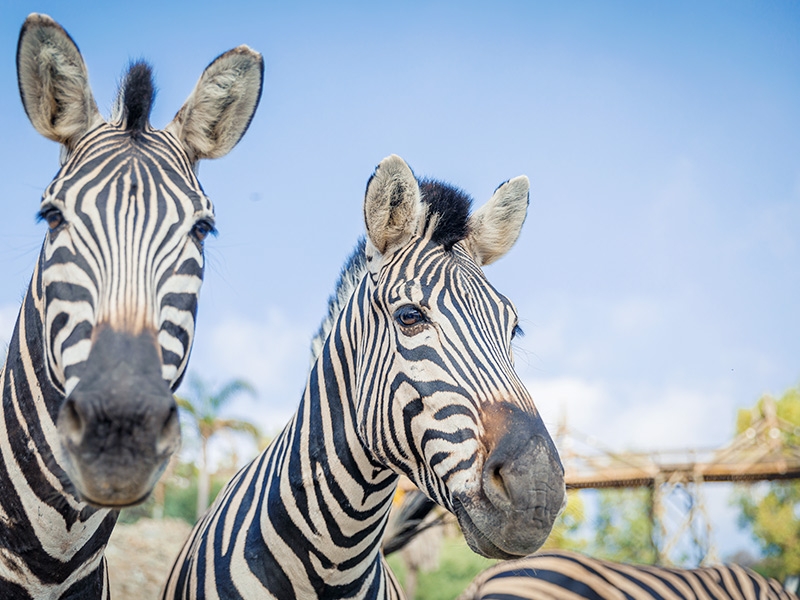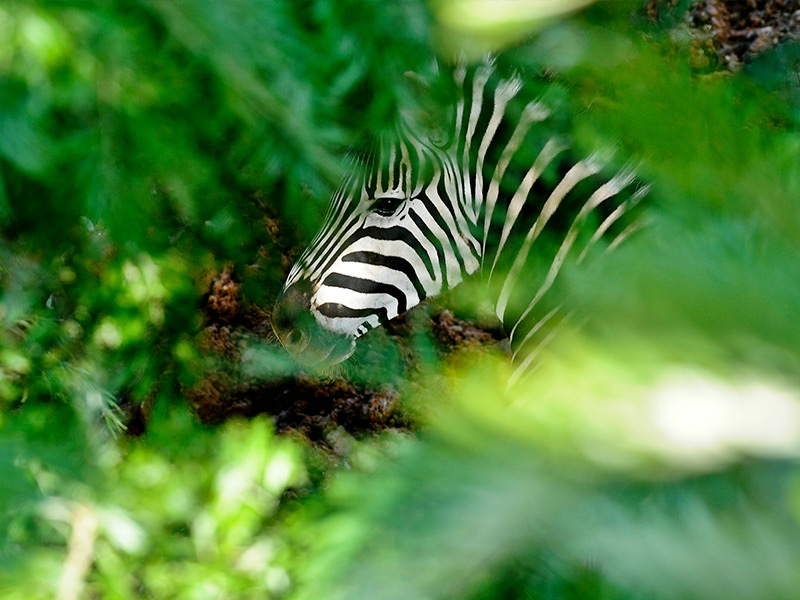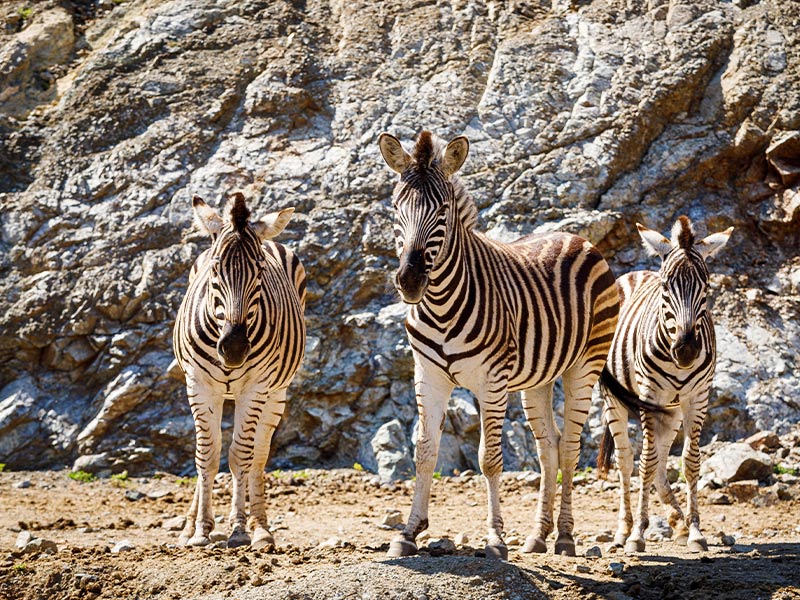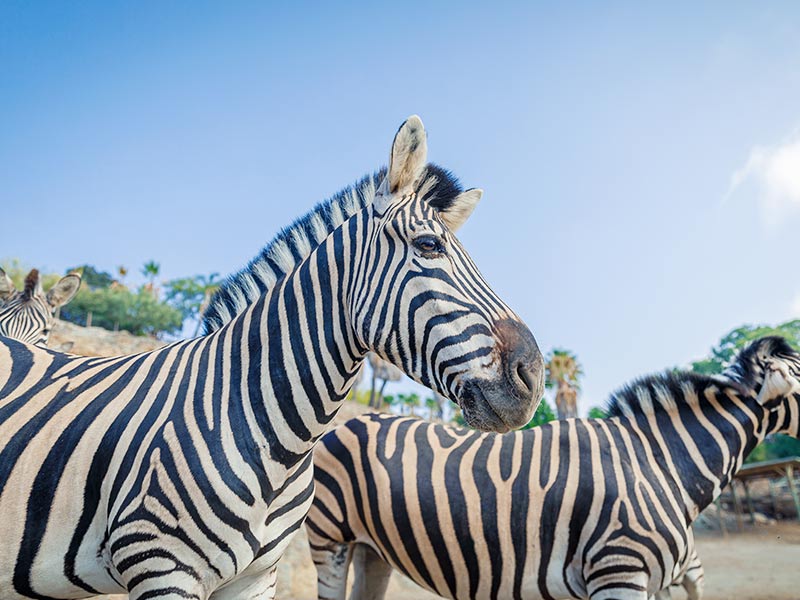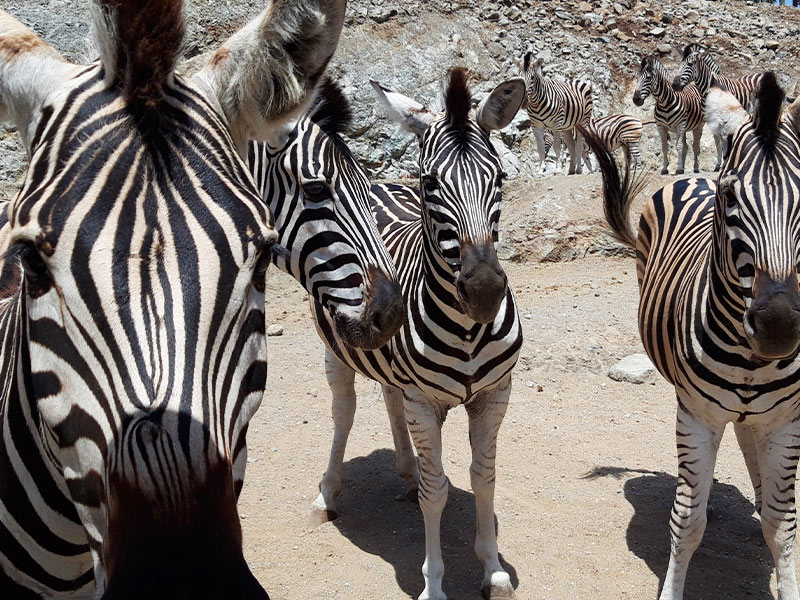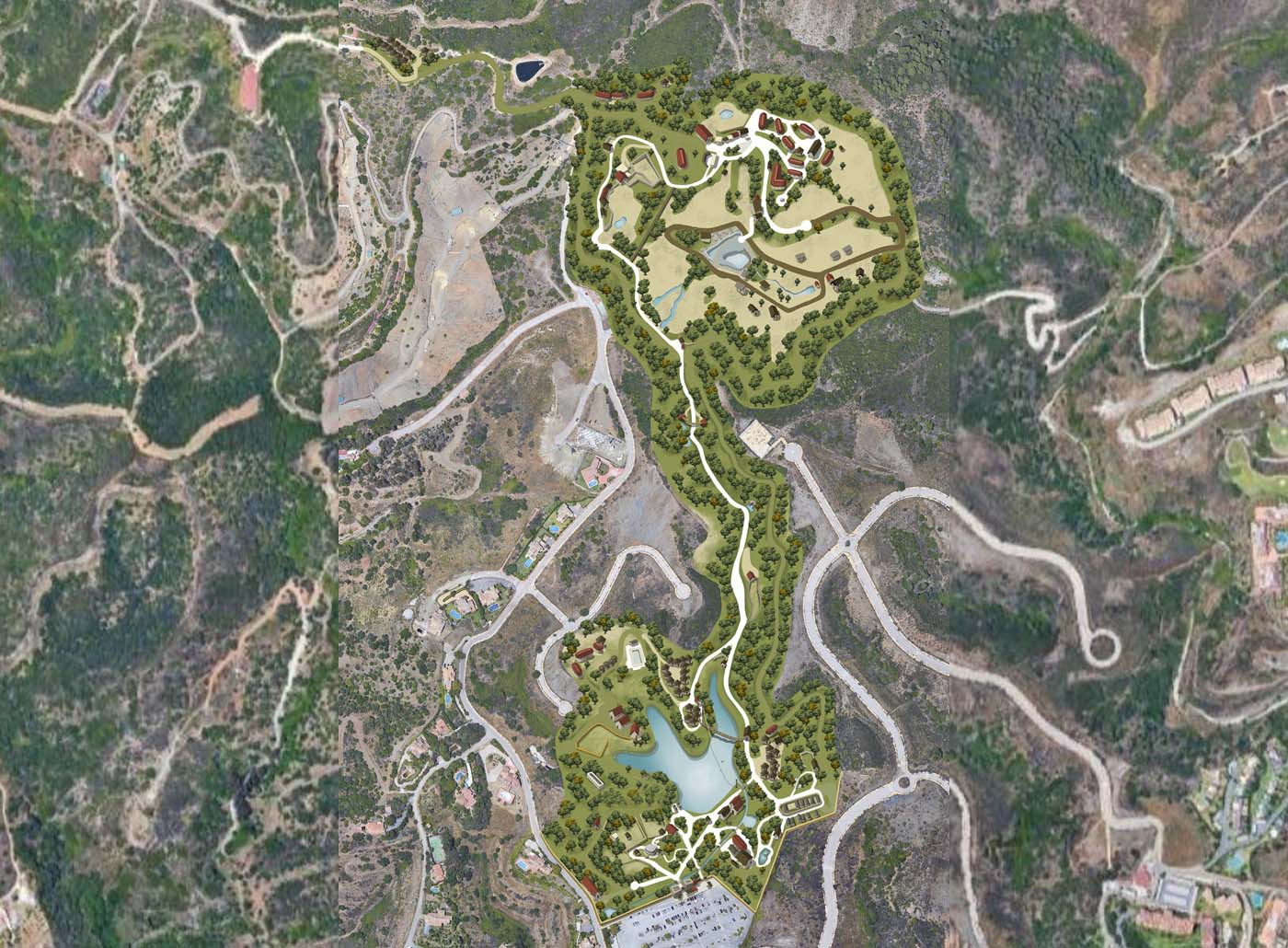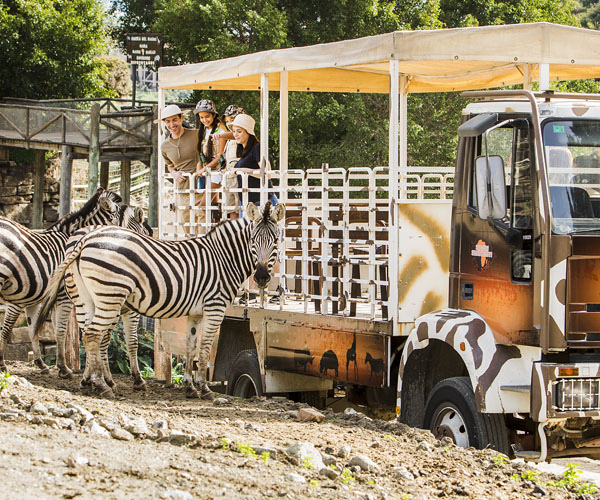A species that is widespread in southeastern Africa, inhabiting grasslands and open forests.
Sometimes called Burchell’s zebra, it owes its name to the British naturalist who first described it, William John Burchell.
This subspecies was thought to be extinct in the wild in the early 20th century until the early 21st century, when it was found that the zebra and Burchell's quagga were the same animal.
The patterns of their stripes differ from other zebra species; they are especially broad becoming wider and more horizontal towards the flanks and rear of the body.
The animals group together in families or groups of males, although during migrations they usually associate in large groups. Family groups are stable and are composed of a stallion, 1 to 6 females and their offspring. If the dominant stallion leaves or dies, the harem will remain together waiting for another male to take over. Several harems come together to form large herds during their migratory journeys.
Each mare gives birth to a single foal after a 12-month gestation period. When preparing to give birth, mares separate from the rest of the herd to hide from predators.
Loss of habitat, blockage of their migratory routes by crop expansion and illegal hunting are their two main threats.
